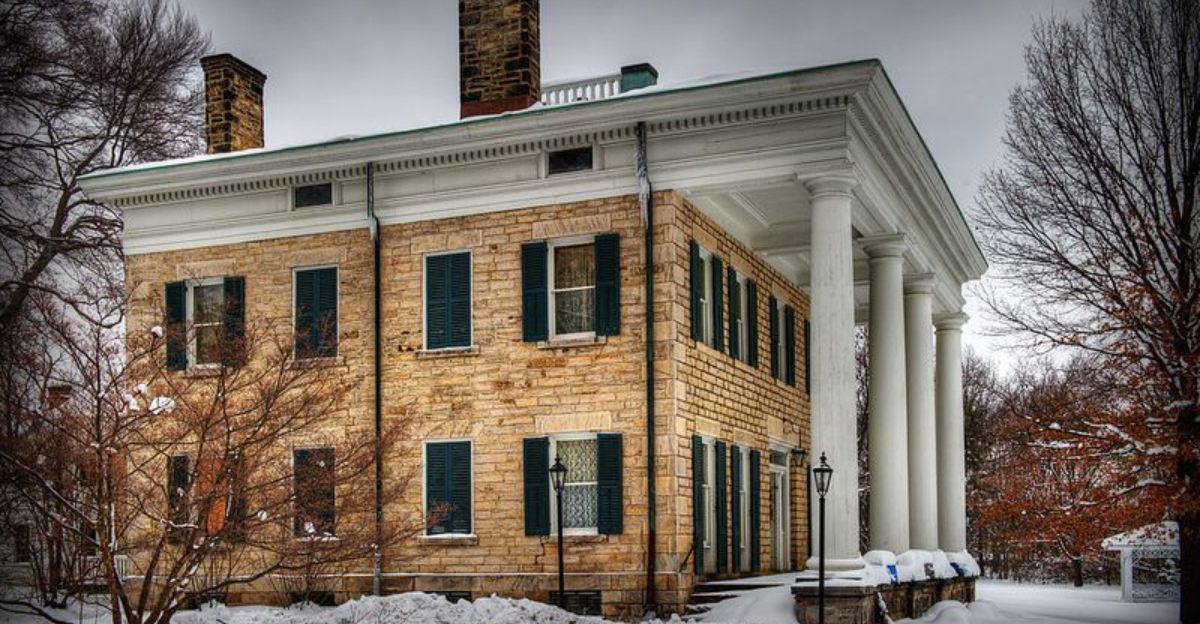During America’s Gilded Age, Ohio’s industrial titans erected magnificent homes that stood as monuments to their wealth and power.
Railroad magnates, oil barons, and steel manufacturers transformed their fortunes into architectural masterpieces across the Buckeye State.
Now, many of these grand estates lie abandoned, their crumbling facades and overgrown gardens whispering stories of bygone opulence.
1. Squire’s Castle – Cleveland (1890)
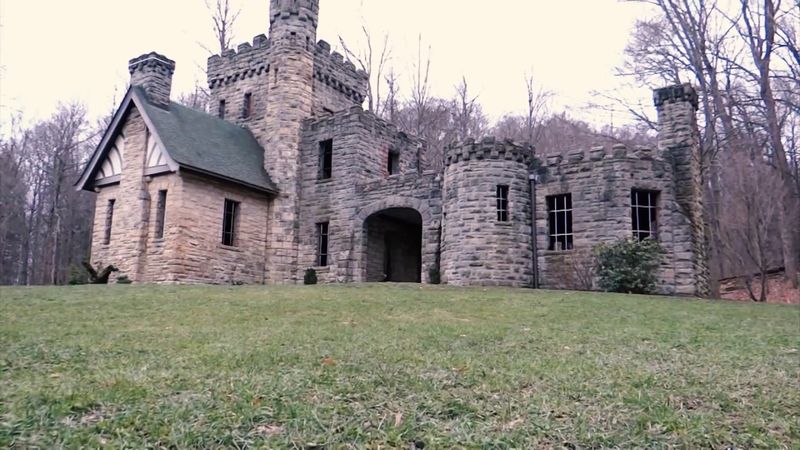
Built by oil executive Feargus Squire as the gatehouse for a mansion never completed. Limestone walls remain stoically weathered against time, with empty window frames gazing across the Cleveland Metroparks.
Moonlight casts eerie shadows through its roofless structure. Though officially maintained as a public landmark, visitors report cold spots and unexplained footsteps echoing through chambers where no one stands.
2. Hannes Tiedemann Mansion – Cleveland (1881)
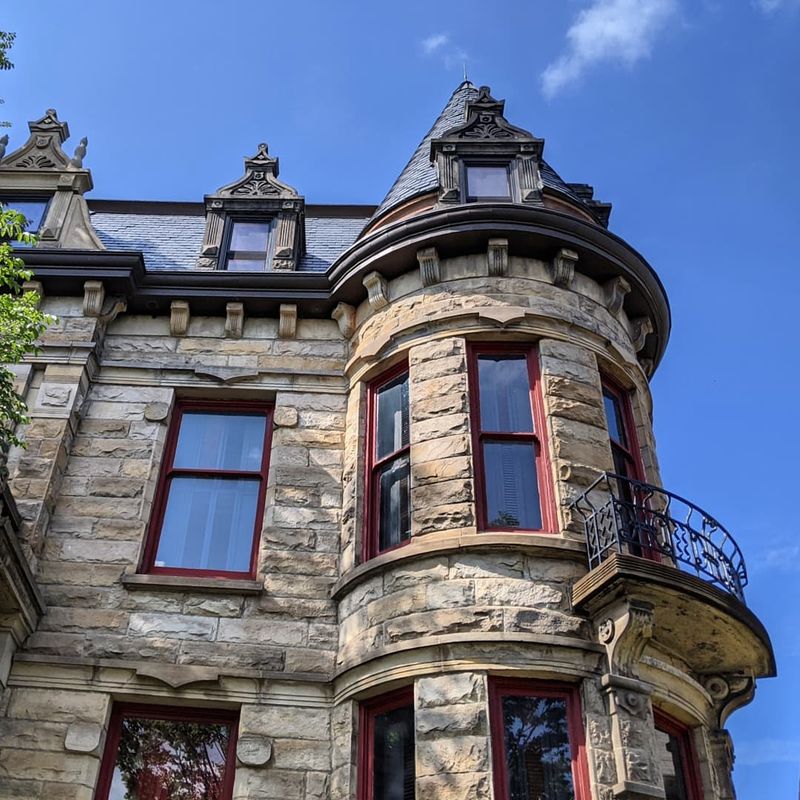
Known locally as Franklin Castle, this imposing stone fortress harbors Ohio’s darkest reputation. Gargoyles guard its turrets while hidden passages snake between rooms where the Tiedemann family suffered mysterious deaths.
Stained glass windows filter sunlight into dusty corridors. Decades of investigations have documented unexplained crying sounds and apparitions in period clothing drifting past ornate woodwork, making it Cleveland’s most notorious haunted landmark.
3. Mooreland Mansion – Kirtland (1898)
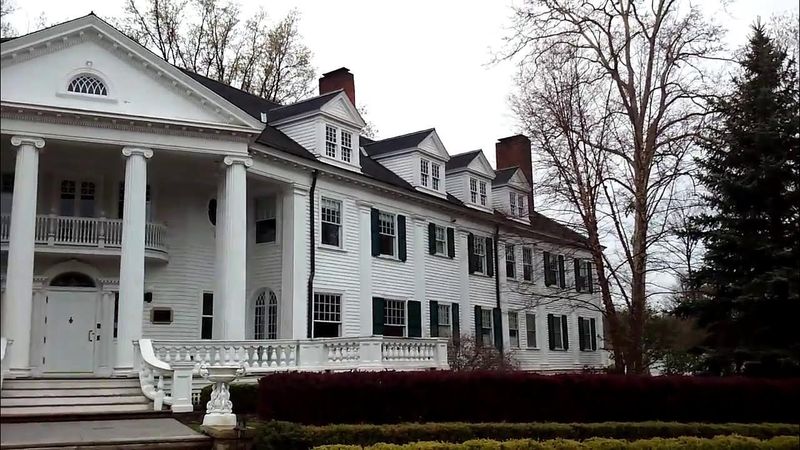
Railroad fortune built this grand Colonial Revival estate with its distinctive white columns standing sentinel. Marble floors that once hosted industrial elites now echo with emptiness between guided tours.
Crystal chandeliers hang from coffered ceilings, catching light even on gloomy days. Repurposed as a conference center, staff members report doors opening without explanation and phantom piano music drifting from the conservatory when no one sits at its keys.
4. Louis Prang Mansion – Cincinnati (1887)
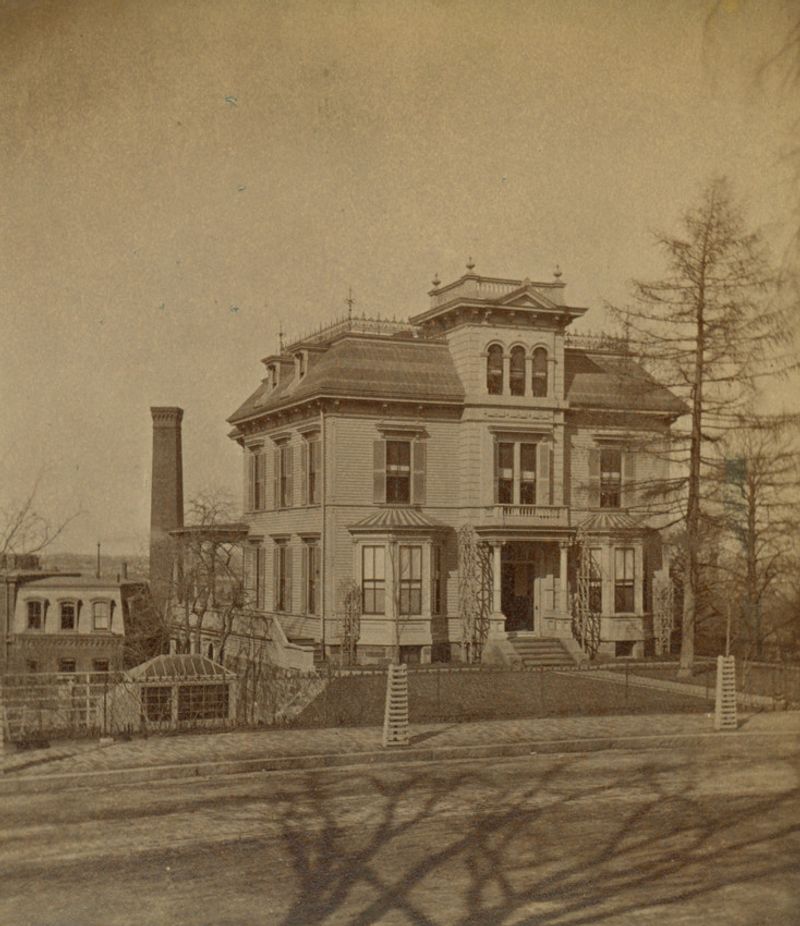
America’s ‘chromolithography king’ constructed this Queen Anne masterpiece with printing fortune. Decorative wooden gingerbread trim adorns turrets where elaborate lithograph designs were once conceived.
Stained wallpaper peels slowly from walls that witnessed artistic innovation. Abandoned after a devastating fire in 1968, urban explorers document mannequin parts inexplicably rearranged between visits and shadowy figures appearing in photographs taken inside its deteriorating rooms.
5. Riddle Mansion – Ravenna (1902)
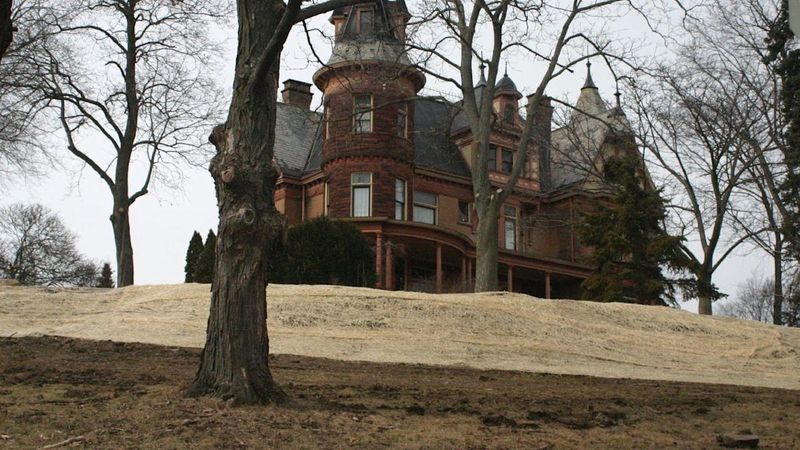
Coal magnate Henry Riddle spared no expense on imported marble staircases leading to nowhere. Carved oak paneling darkens rooms where whispers seem to follow visitors through the estate’s museum spaces.
Originally furnished with custom Tiffany lamps casting colored shadows across Italian tile. Maintained as a historical site today, docents refuse to work alone after sunset when disembodied voices call out names and invisible hands tug at clothing.
6. Hower Mansion – Akron (1871)
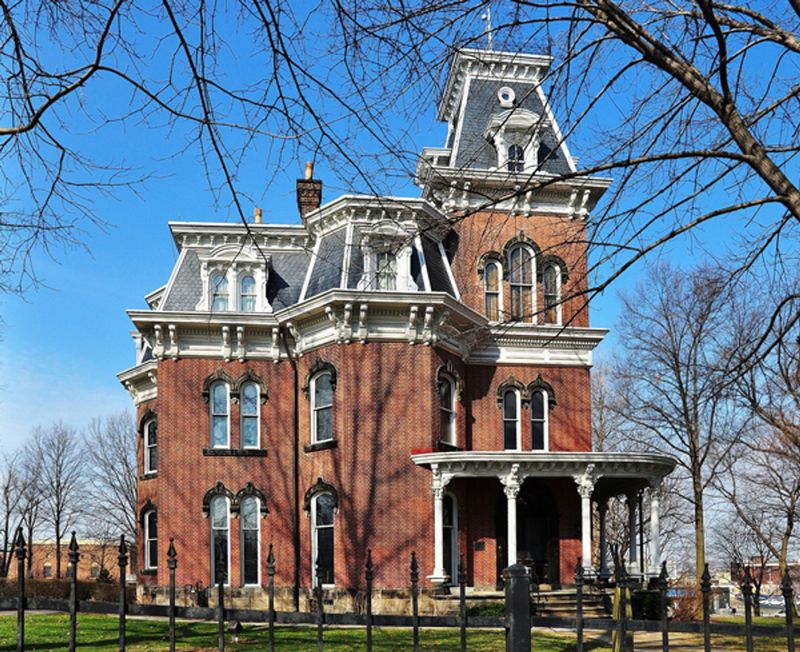
Agricultural machinery fortune financed this Second Empire jewel with its distinctive mansard roof piercing Akron’s skyline. Intricately carved walnut woodwork frames doorways where servants once hurried to attend industrial royalty.
Dust-covered crystal reflects dim light across formal parlors. Converted to a museum, overnight security guards document rocking chairs moving independently and the scent of perfume wafting through rooms that housed three generations of the Hower family.
7. Perkins Stone Mansion – Akron (1837)
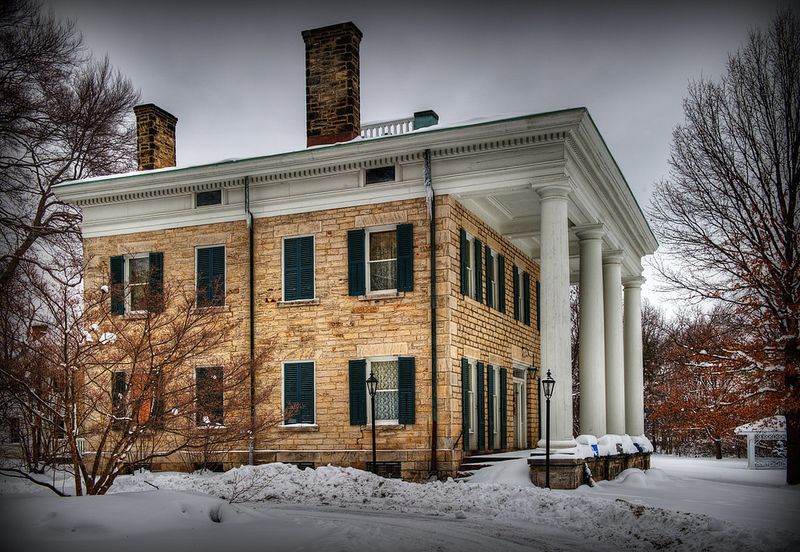
Colonel Simon Perkins, wool industry pioneer, established this Greek Revival monument overlooking what became Akron’s industrial heart. Symmetrical columns stand proudly despite weathering nearly two centuries of Ohio seasons.
Original glass panes distort views of overgrown gardens once meticulously maintained. Now operating as a historical museum, visitors frequently report cold spots in the nursery where Perkins children succumbed to scarlet fever, their laughter occasionally echoing through empty hallways.
8. Stan Hywet Hall – Akron (1915)

Goodyear Tire founder F.A. Seiberling commissioned this Tudor Revival estate spanning 70 acres. Gargoyles peer from stonework where rubber industry deals transformed America’s transportation landscape.
Leaded glass windows frame gardens designed by landscape pioneer Warren Manning. Though meticulously maintained as a museum, staff document unexplained footsteps in empty corridors and objects moving between rooms overnight when the massive estate stands empty of living visitors.
9. Grey Towers – Glenville (1883)
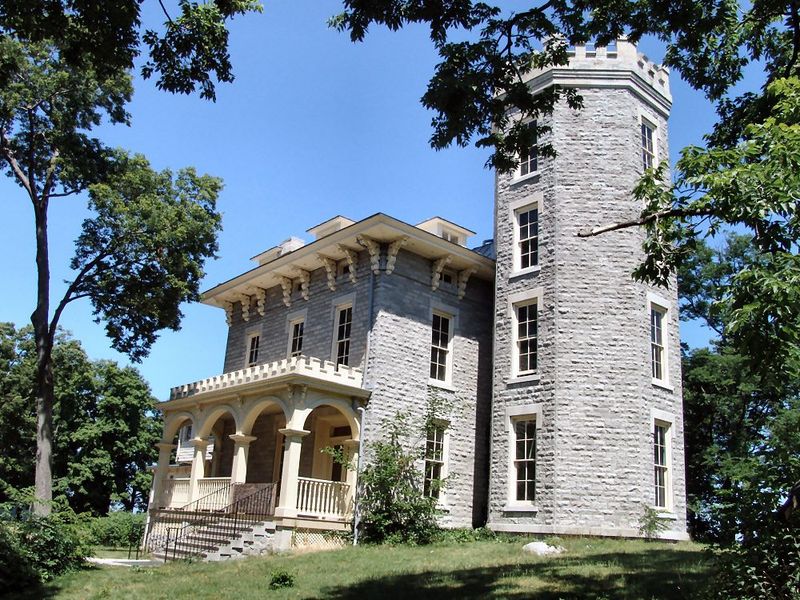
Sylvester Everett, railroad executive, constructed this Norman castle complete with battlements overlooking Lake Erie. Granite blocks, sourced from quarries owned by Everett himself, stand defiant against Cleveland winters.
Turrets that once housed servants now stand empty. After serving as a university building, the abandoned structure’s windows reflect moonlight while urban explorers document phantom music and unexplained cold spots in what was once the grand ballroom.
10. Longworth Mansion – Cincinnati (1888)
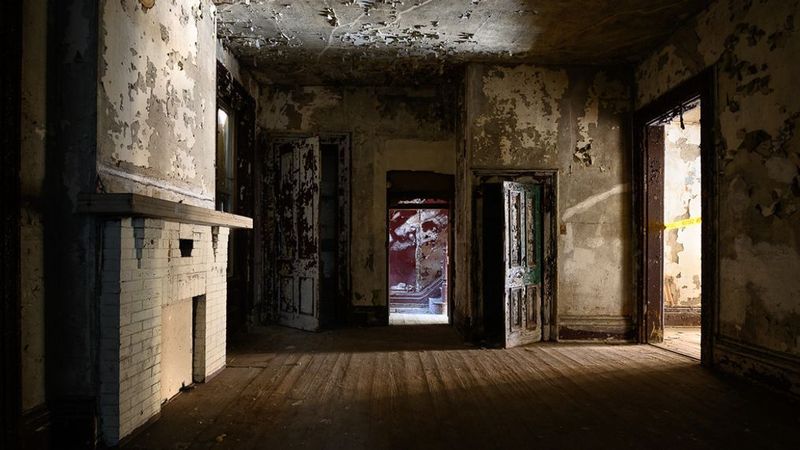
Nicholas Longworth, wine industry pioneer, created this Italianate palazzo with fortune from Ohio River Valley vineyards. Marble fireplaces imported from Carrara stand cold in rooms where presidents once dined.
Hand-painted ceilings peel above parquet floors warped by neglect. After housing various institutions, the mansion stands mostly vacant, with security guards reporting phantom cigar smoke and the sound of wine glasses clinking during silent midnight hours.
11. Hayden Mansion – Columbus (1861)
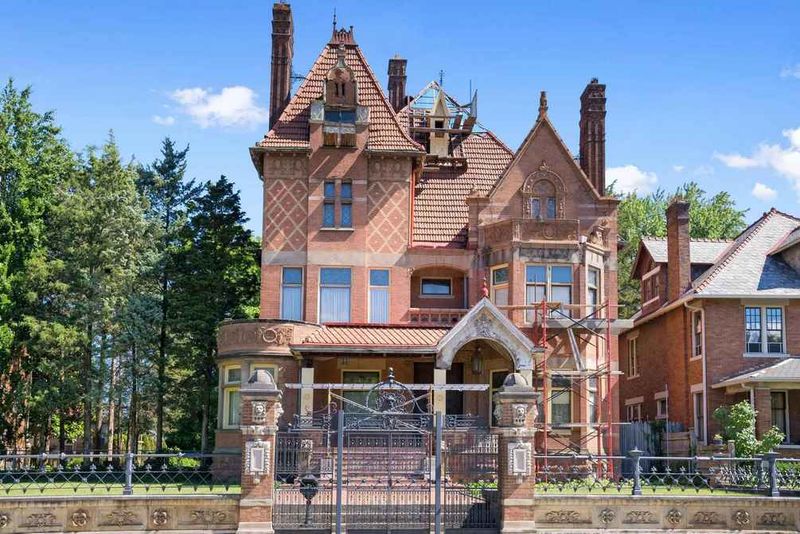
Peter Hayden, banking and manufacturing tycoon, erected this Renaissance Revival masterpiece using iron produced in his own foundries. Ornate metalwork adorns balconies where Columbus society once gathered to glimpse industrial aristocracy.
Sweeping staircases lead to bedrooms frozen in Victorian splendor. After serving various institutional purposes, portions sit vacant while maintenance workers report tools disappearing and reappearing in locked rooms where Hayden’s portrait seems to watch visitors.
12. Mather Mansion – Cleveland (1910)
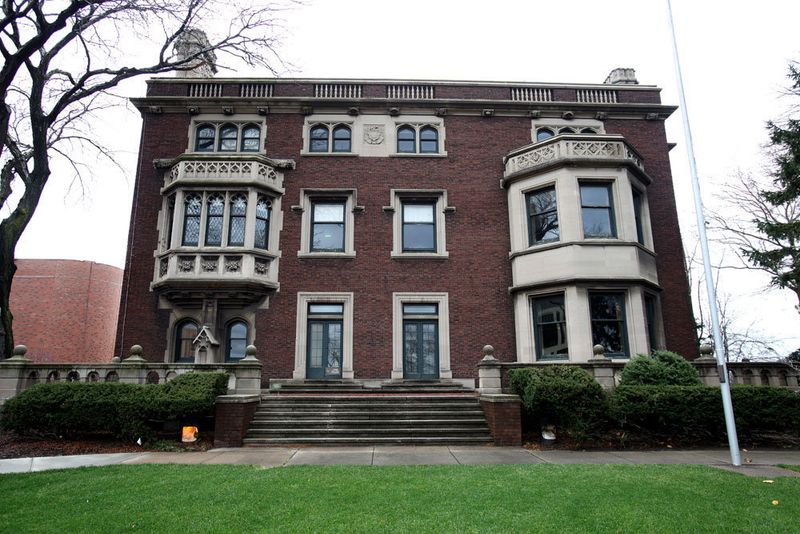
Samuel Mather, steel industry titan, commissioned this Italian Renaissance palace with 45 rooms showcasing industrial wealth. Limestone walls enclose spaces where Cleveland’s elite forged business empires over brandy and cigars.
Stained glass skylights filter sunlight onto marble floors cracked by time. Now owned by Cleveland State University, security personnel document lights turning on independently and elevator operations when no one stands at controls.
13. Promont House – Milford (1865)
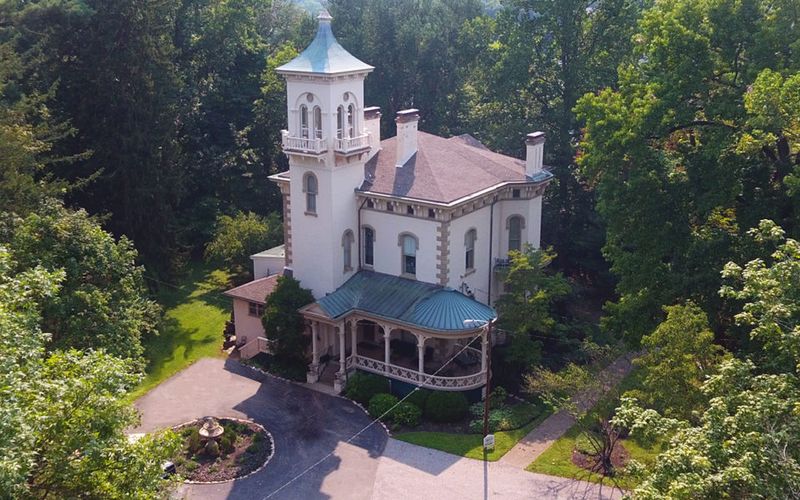
Governor John Pattison built this Victorian Gothic residence with political ambitions and manufacturing wealth. Gingerbread trim adorns verandas where campaign strategies shaped Ohio’s industrial policies.
Steeply pitched roofs crown rooms where servants once hurried through hidden passages. Maintained as a museum, visitors capture orbs in photographs and experience cold spots in the governor’s study where Pattison died unexpectedly in office.
14. Buxton Inn Mansion – Granville (1812)
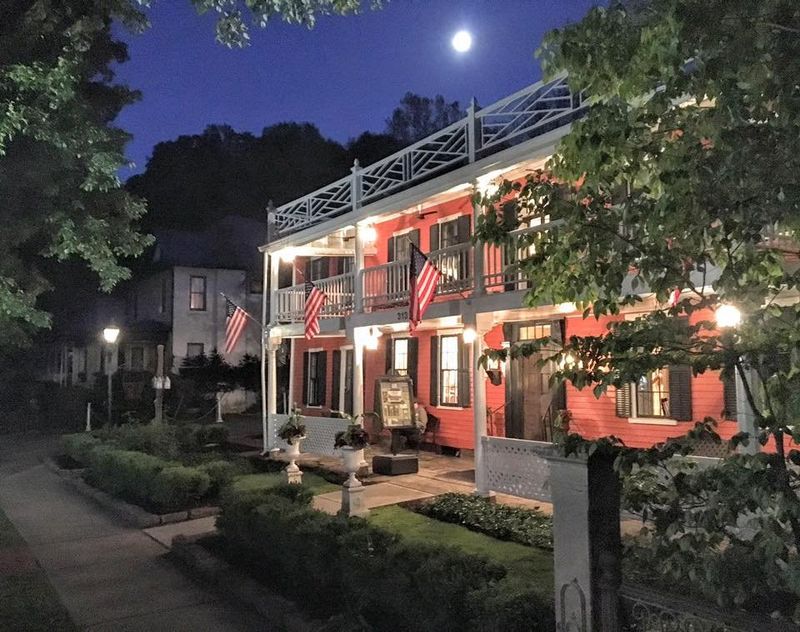
Early industrialist Orrin Granger established this Federal-style landmark serving Ohio’s growing commercial elite. Original fireplaces that warmed railroad executives and manufacturing pioneers still burn during winter months.
Wide-plank floors creak under the weight of centuries. Continuously operated as an inn since construction, guests consistently report encounters with “The Lady in Blue” – believed to be a former innkeeper still maintaining her eternal watch over the historic property.
15. Steele Mansion – Painesville (1867)
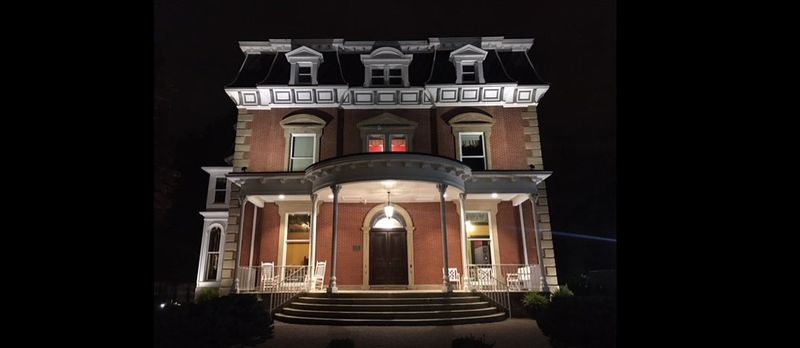
Railroad attorney George Steele constructed this Second Empire monument with 20-foot ceilings towering over Lake County. Hand-carved woodwork frames doorways where industrial disputes were settled over brandy.
Marble mantles imported from Italy stand cold against walls that witnessed financial collapse. Abandoned for decades following a devastating fire, restoration saved the structure while preserving unexplained footsteps and phantom piano music that continues to haunt overnight guests.

